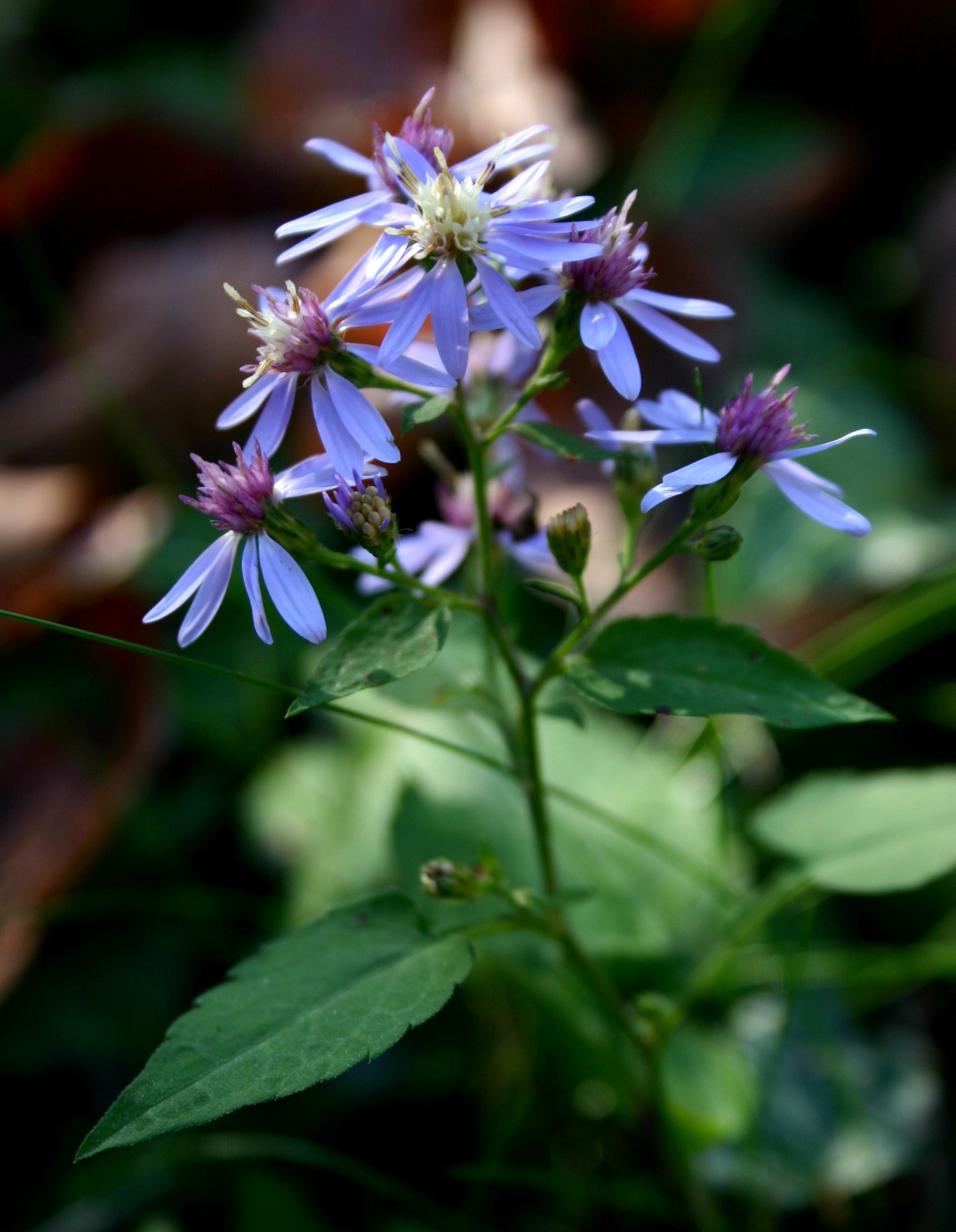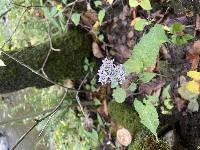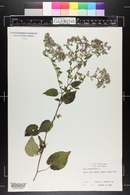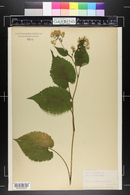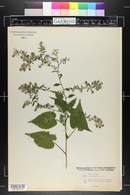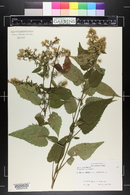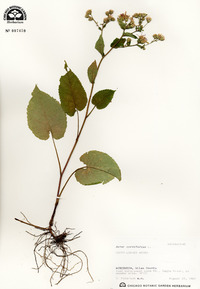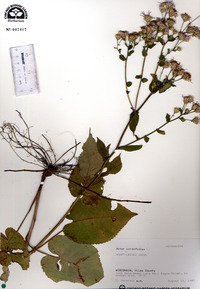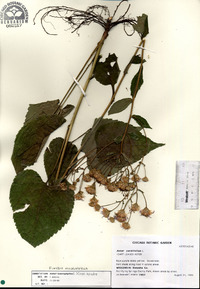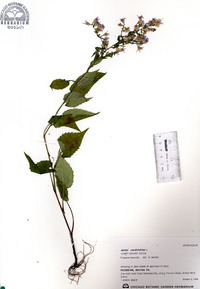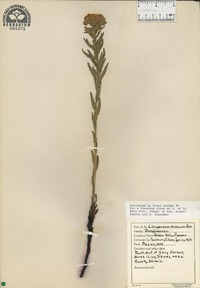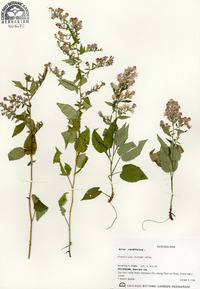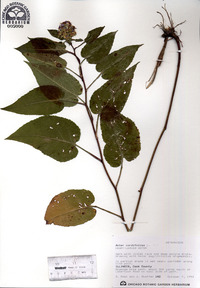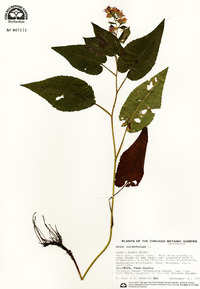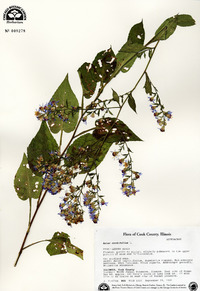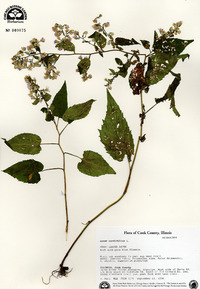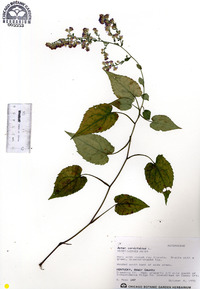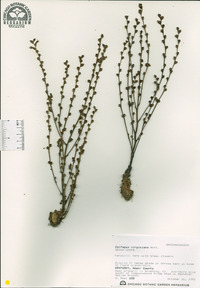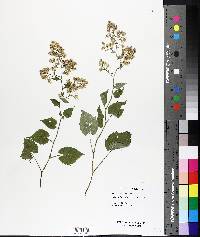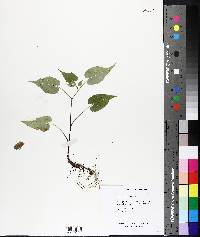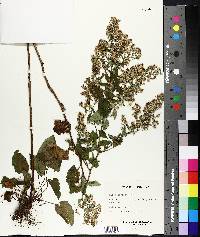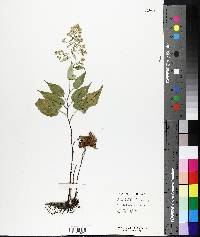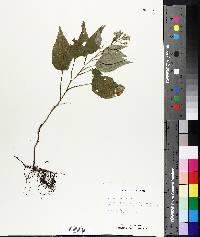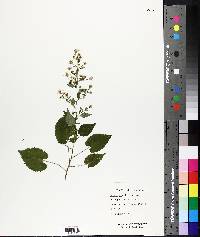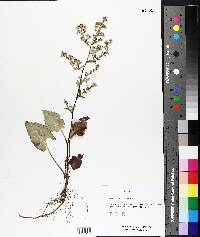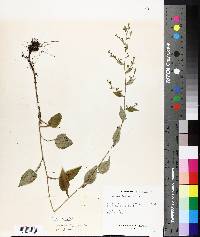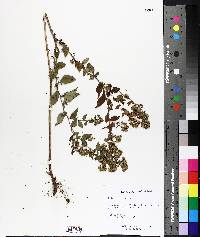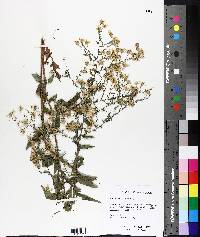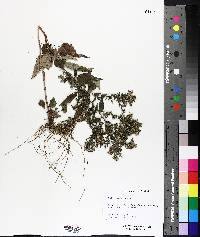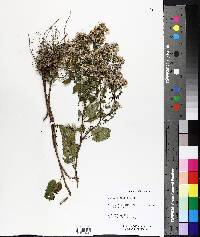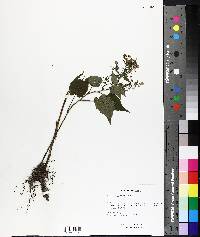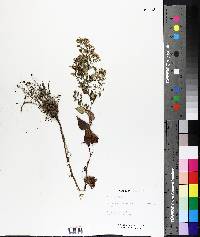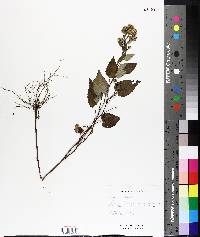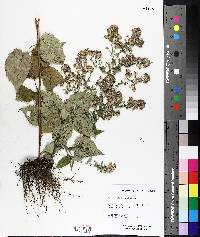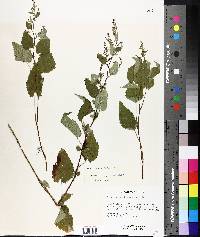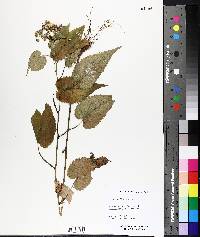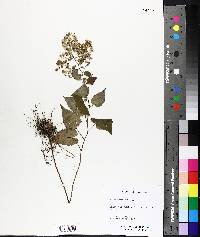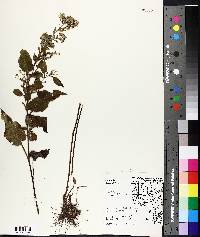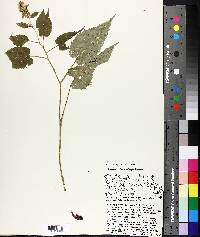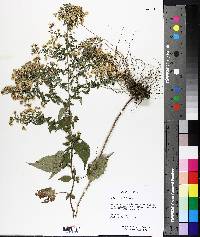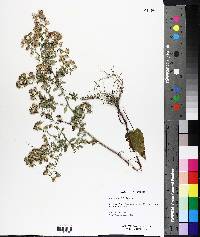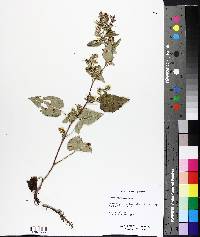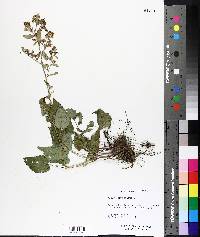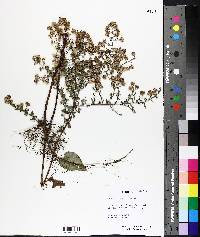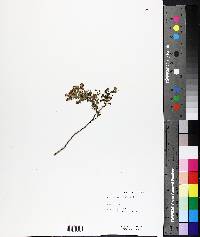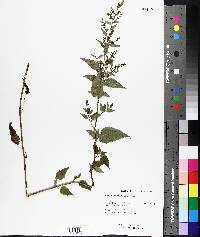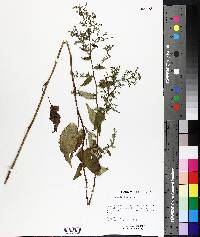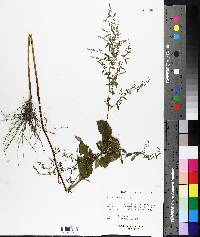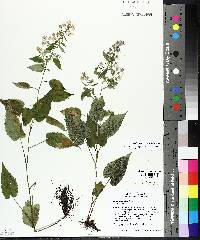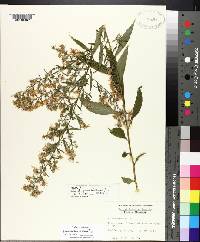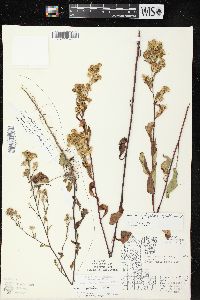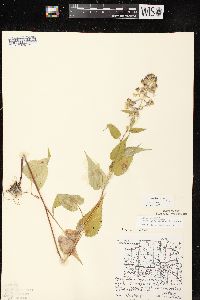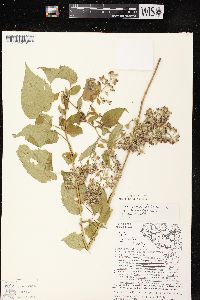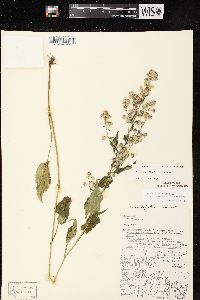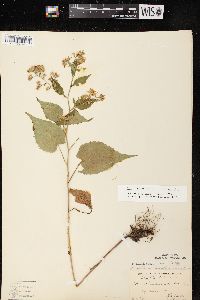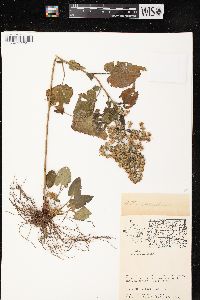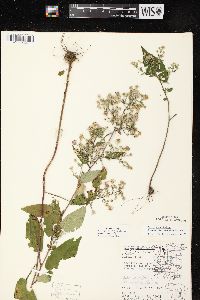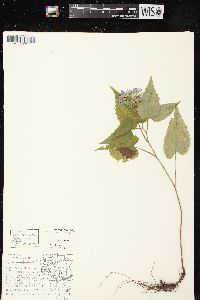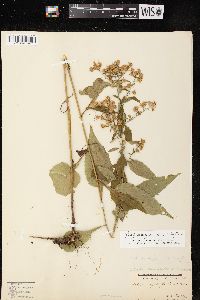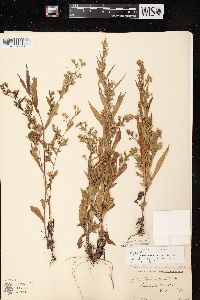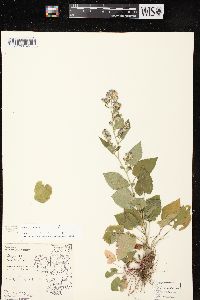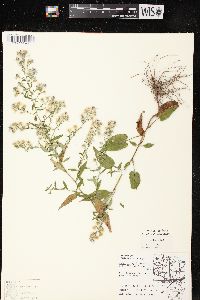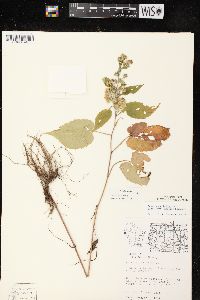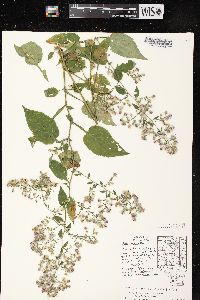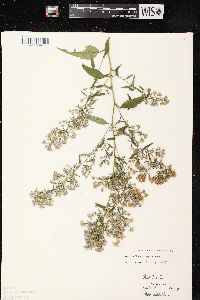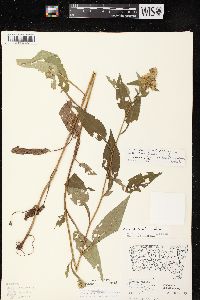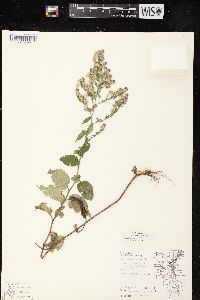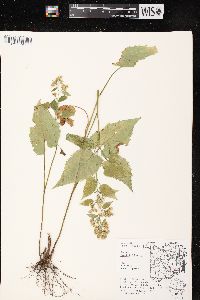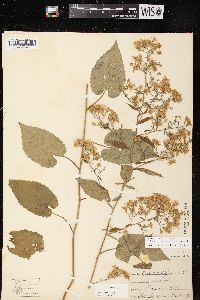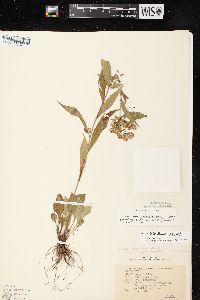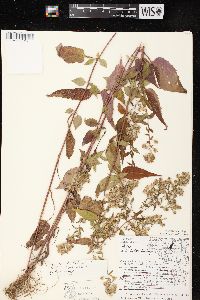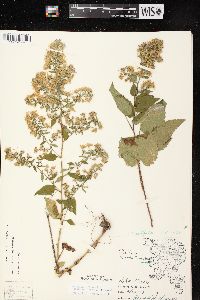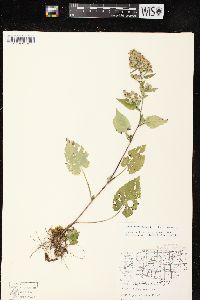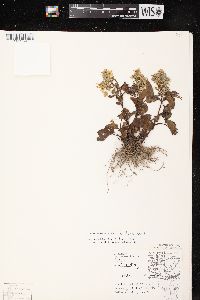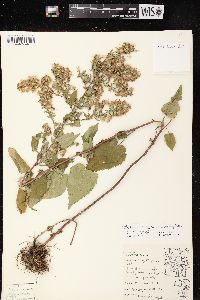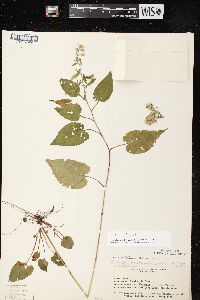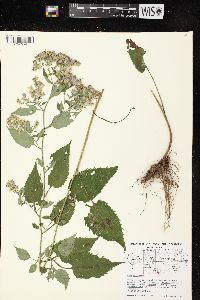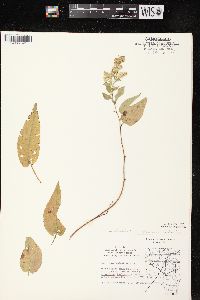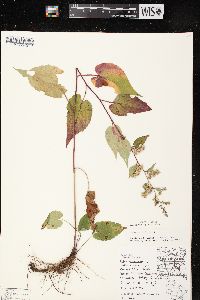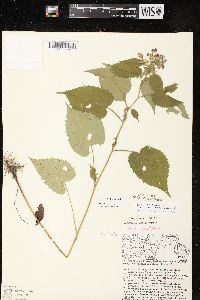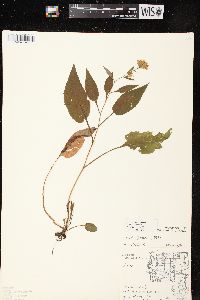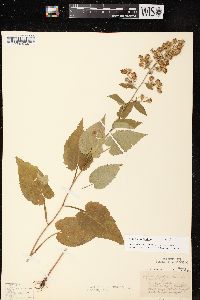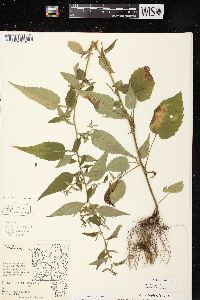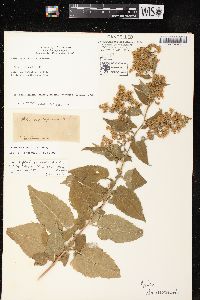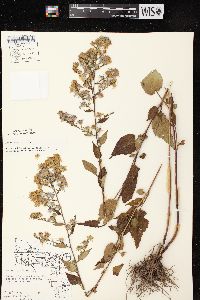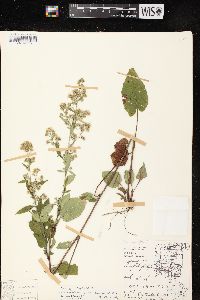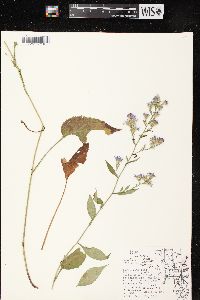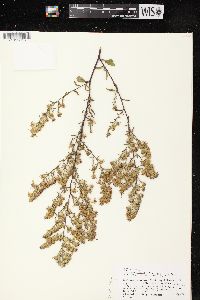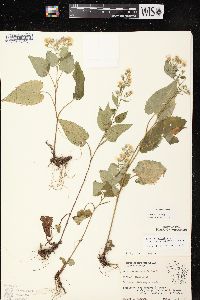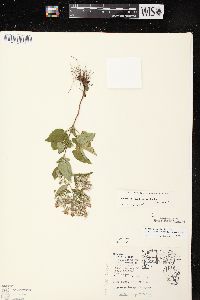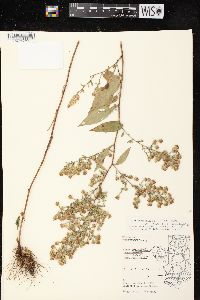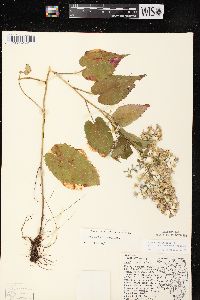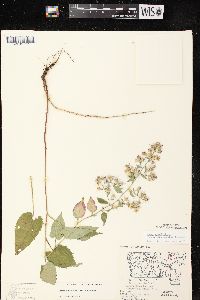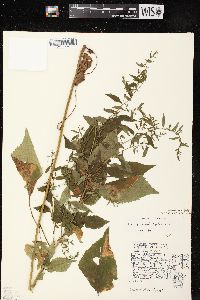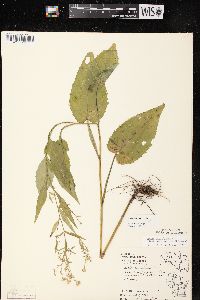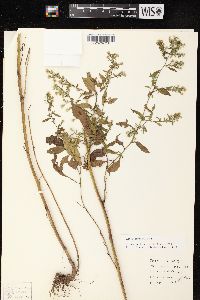Symphyotrichum cordifolium
|
|
|
|
Family: Asteraceae
Common Blue American-Aster, more...common blue wood aster
[Aster cordifolius Muhl. ex Willd., moreAster cordifolius subsp. cordifolius , Aster cordifolius subsp. laevigatus (Porter) A.G. Jones, Aster cordifolius subsp. sagittifolius (Wedem.ex Willd.) A.G.Jones, Aster cordifolius var. alvearius , Aster cordifolius var. cordifolius , Aster cordifolius var. furbishiae Fernald, Aster cordifolius var. incisus Britton, Aster cordifolius var. laevigatus Porter, Aster cordifolius var. lanceolatus Porter, Aster cordifolius var. morantus (Shinners) Shinners, Aster cordifolius var. moratus G.L.Nesom, Aster cordifolius var. pedicellatus , Aster cordifolius var. polycephalus Ch.Porter, Aster cordifolius var. racemiflorus Fernald, Aster cordifolius var. sagittifolius (Wedem.ex Willd.) A.G.Jones, Aster finkii var. moratus Shinners, Aster lowrieanus Porter, Aster lowrieanus var. incisus Porter, Aster lowrieanus var. lanceolatus Porter, Aster lowrieanus var. lowrieanus , Aster plumarius Burgess, Aster sagittifolius Ell., Symphyotrichum cordifolium var. furbishiae (Fernald) G.L.Nesom, Symphyotrichum cordifolium var. lanceolatum (Porter) G.L.Nesom, Symphyotrichum cordifolium var. moratum (Shinners) G.L.Nesom, Symphyotrichum cordifolium var. polycephalum (Porter) G.L.Nesom, Symphyotrichum cordifolium var. racemiflorum (Fernald) G.L.Nesom, Symphyotrichum sagittifolium (Wedem.ex Willd.) G.L.Nesom] |
Perennials, 20-120 cm, colonial or cespitose; branched rhizomatous, or with branched caudices, becoming ± woody. Stems 1-5+, erect (straight to ± flexuous distally, often reddish, sometimes brown), usually glabrous, sometimes ± pilose, particularly distally. Leaves thin, margins serrate (often sharply, teeth acuminate, mucronulate) to serrate-crenate or subentire, strigose, apices acuminate to acute, mucronulate, abaxial faces glabrous or sparsely to densely strigose-pilose, often pilose on midveins, sometimes on other veins also, adaxial glabrous or sparsely to densely strigose, sometimes ± scabrous; basal withering by flowering, new vernal rosettes often present, long-petiolate (petioles ± narrowly winged, bases dilated, sheathing, ciliate), blades ovate to elliptic or suborbiculate, (10-)35-150 × (10-)25-75 mm, bases usually deeply cordate, sometimes rounded, margins coarsely, often irregularly serrate, apices sometimes obtuse or rounded; proximal cauline often withering by flowering, winged-petiolate (becoming shorter and more widely winged distally, petiole bases clasping), blades widely to narrowly ovate, 40-100(-140) × 20-40(-70) mm, reduced distally, bases ± deeply cordate to rounded, margins sharply serrate, apices acuminate; distal usually sessile or subsessile, rarely short-petiolate, blades ovate to lanceolate, 5-105 × 2-45 mm, bases cordate or rounded to attenuate or cuneate, margins serrate or entire (distalmost), apices acuminate. Heads [(5-)20-300+] in ± densely paniculiform arrays, branches divaricate to ascending, paniculiform, sometimes ± long-arching, leafy. Peduncles 0.3-2 cm, ± pilose, bracts linear-oblanceolate or -lanceolate to linear, foliaceous, distally grading into phyllaries, margins sparsely ciliolate, glabrous. Involucres cylindro-campanulate to cylindric, (3-)4.5-5(-6) mm. Phyllaries in (3-)4-6 series, linear-lanceolate to oblong-lanceolate, unequal, bases indurate 1 / 2 - 3 / 4 , margins scarious, erose, hyaline, sparsely ciliolate, green zones lanceolate to ± diamond-shaped, apical, apices (often red-tipped) acute to obtuse-acuminate or acuminate, mucronulate, faces glabrous or sparsely strigillose. Ray florets (8-)10-16(-20); corollas usually blue to purple, seldom whitish or pink, laminae (5-)6-8(-10) × 1.4-1.8 mm. Disc florets (8-)10-15(-20); corollas cream-color or light yellow becoming purple, (3-)4-4.5(-5) mm, tubes slightly shorter Flowering Aug-Oct. Rich, mostly mesic, rocky to loamy soils, open wooded slopes and bluffs, stream banks, moist ledges, swampy woods, border of beech-maple or oak-hickory forets, clearings, thickets, roadsides, along ditches, sometimes weedy in urban areas; 0-1200 m; Man., N.B., N.S., Ont., P.E.I., Que.; Ala., Ark., Conn., D.C., Ga., Ill., Ind., Iowa, Ky., Maine, Md., Mass., Mich., Minn., Mo., Nebr., N.H., N.J., N.Y., N.C., Ohio, Okla., Pa., R.I., S.C., S.Dak., Tenn., Vt., Va., W.Va., Wis. Symphyotrichum cordifolium has been introduced in British Columbia but has not persisted. In a morphometric analysis of infraspecific variation in the northeastern part of the range, A. Legault (1986) showed that the varieties described are not distinct and mostly represent phenotypic variants caused by growing conditions; likewise, diploid and tetraploid races could not be distinguished morphologically. The type of Aster cordifolius var. laevigatus is conspecific with that of Symphyotrichum cordifolium. This name is the basionym of S. lowrieanum; therefore the latter cannot be considered distinct from S. cordifolium and is not recognized here. Most specimens initially identified as S. lowrieanum in herbaria have been re-determined as S. cordifolium. Some of the specimens, however, appear to correspond to the hybrid between S. cordifolium and S. laeve var. laeve, called S. ×schistosum (Steele) G. L. Nesom (syn. Aster schistosus Steele). Symphyotrichum ×tardiflorum (Linnaeus) Greuter, Aghababian & Wagenitz [syn. Aster tardiflorus Linnaeus, A. novibelgii Linnaeus subsp. tardiflorus (Linnaeus) A. G. Jones, A. novibelgii var. tardiflorus (Linnaeus) A. G. Jones, Symphyotrichum novibelgii (Linnaeus) G. L. Nesom var. tardiflorum (Linnaeus) G. L. Nesom] is the F 1 hybrid between S. cordifolium and S. puniceum (J. Labrecque & Brouillet 1996; G. L. Nesom 1997; W. Greuter et al. 2005). Aster tardiflorus forma vestitus (Fernald) Fernald or var. vestitus Fernald is a hairy variant of the hybrid and is not recognized here; hairiness may be related to whichever species is the maternal parent. A. G. Jones (1989) reported hybrids with S. drummondii and S. urophyllum. She believed that var. moratum may be a hybrid with or an introgressant from S. drummondii, but this is not accepted by all authors. Symphyotrichum ×finkii (Rydberg) G. L. Nesom (syn. Aster finkii Rydberg), may be the hybrid of S. cordifolium and S. shortii. All such putative hybrids need to be confirmed.
Plants with a branched caudex or short rhizome, occasionally with creeping rhizomes as well; stems 2-12 dm, glabrous below the infl or occasionally loosely hairy (chiefly in lines); lvs rather thin, sharply toothed, acuminate, ±scabrous or scaberulous above, at least toward the margins, and ±hirsute beneath with mostly long, flattened hairs, narrowly to broadly ovate, the larger ones 3.5-15 נ2.5-7.5 cm, all but the reduced ones of the infl cordate (usually deeply so) and petiolate, the petioles shorter upward but only slightly if at all winged; infl paniculiform, with loosely ascending to widely spreading branches and often very numerous heads, the peduncles usually well developed and ±bracteolate, sometimes to 1.5 cm; invol 3-6 mm, glabrous, its narrow bracts imbricate, obtuse or merely acute, the green tip short and broad (or in the innermost more elongate), the green usually partly (or wholly) replaced or obscured by anthocyanin, visibly so to the naked eye in some of them; rays 8-20, blue or purple (white), 5-10 mm; achenes glabrous; 2n=16, ?18, 32, ?36. Woods and clearings; N.S. to Minn., s. to Va., n. Ga., nw. Ala., and Mo. An apparent hybrid with no. 28 [Aster shortii Lindl.] has been named A. ئinkii Rydb. Gleason, Henry A. & Cronquist, Arthur J. 1991. Manual of vascular plants of northeastern United States and adjacent Canada. lxxv + 910 pp. ©The New York Botanical Garden. All rights reserved. Used by permission. Resembling no. 29, [Aster cordifolius L.] but glabrous except for the sometimes puberulent peduncles, the lvs very smooth to the touch, avg narrower and more elongate, the middle and upper ones generally only shallowly cordate or merely subcordate or abruptly narrowed to the commonly conspicuously winged petiole, or even sessile and lanceolate; invol bracts often lacking anthocyanin; 2n=?36. Woods; s. Ont. and s. Que., s. through N.Y., N.J., and Pa. to the mts. of Md., W.Va., Va., N.C., Tenn., and Ga. Perhaps originating by hybridization of nos. 9 [Aster laevis L.] and 29 [Aster cordifolius L.], but now self-perpetuating. Some plants of the shale-barrens of Va. have slender creeping rhizomes and have been distinguished as A. schistosus Steele. Gleason, Henry A. & Cronquist, Arthur J. 1991. Manual of vascular plants of northeastern United States and adjacent Canada. lxxv + 910 pp. ©The New York Botanical Garden. All rights reserved. Used by permission. Plants with a branched caudex or short rhizome; stems 4-12 dm, ±glabrous below the infl, or the upper part occasionally villous-puberulent in lines; lvs rather thick, shallowly toothed, glabrous or scabrous above, glabrous or ±villous-hirsute with flattened hairs beneath, the lowest ones ovate or more often lance-ovate, acuminate, cordate, 6-15 נ2-6 cm, long-petiolate, those above progressively less cordate or merely abruptly narrowed to the shorter, often broadly winged petiole, or the upper tapering and sessile; infl paniculiform, elongate, with ±strongly ascending, narrowly bracteate branches, the heads often very numerous, on narrowly bracteate peduncles rarely over 1 cm and usually under 5 mm, thus appearing crowded; invol 4-6 mm, its imbricate bracts glabrous except for the sometimes ciliolate margins, very slender and long-pointed, with elongate, narrow green tip, often minutely purple-tipped under a lens; rays 8-20, usually pale blue or lilac, sometimes white, 4-8 mm; achenes glabrous; 2n=16, ?18, ?36, 48. Streambanks, woods, and less often in open places, often in more mesic habitats than no. 32 [Aster drummondii Lindl.], with which it hybridizes extensively; sw. Vt. to Minn., s. to Ga., w. Fla., Miss., and Mo. (A. hirtellus; A. urophyllus) My interpretation of the name A. sagittifolius is based on examination of the type material at Berlin. Gleason, Henry A. & Cronquist, Arthur J. 1991. Manual of vascular plants of northeastern United States and adjacent Canada. lxxv + 910 pp. ©The New York Botanical Garden. All rights reserved. Used by permission. From Flora of Indiana (1940) by Charles C. Deam Infrequent to frequent throughout the state in dry woods. This is also a highly variable species and several varieties have been described. None of them have been reported, and I hesitate to report the variation in my specimens under varietal names. …… Indiana Coefficient of Conservatism: C = 5 Wetland Indicator Status: N/A |

